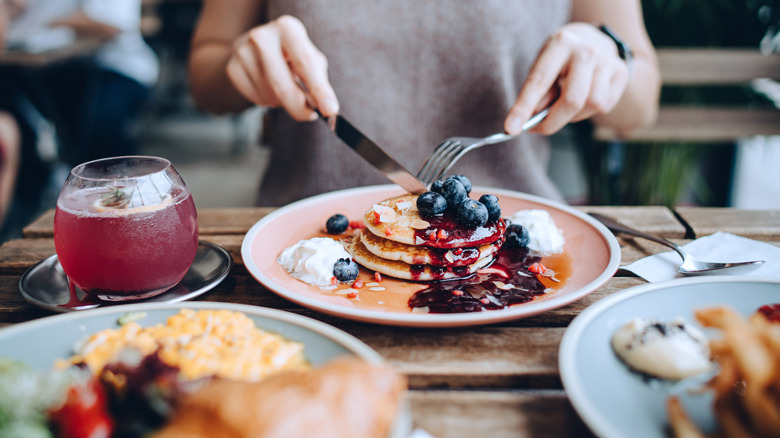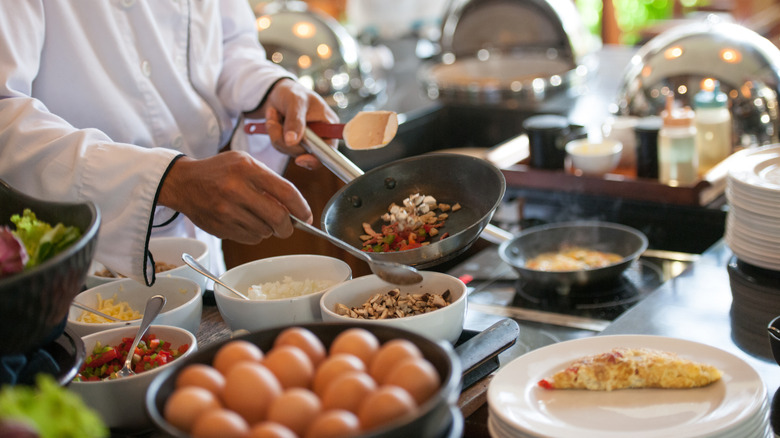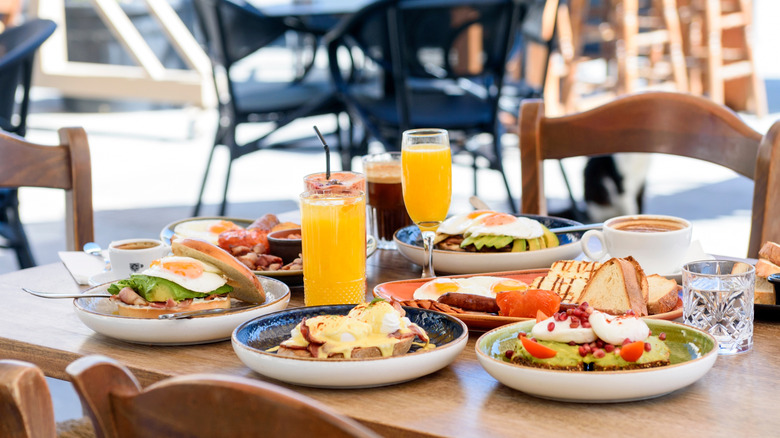The Bear Is Right, Working Brunch Is The Worst. Here's Why
"The Bear," which is probably the best TV drama ever based on a Chicago Italian beef stand, gets a lot of things wrong about the restaurant business. Changing the menu every day, after all, is not only a giant pain in the butt, but also won't earn you a Michelin star. One thing the show nailed, however, is the fact that most chefs aren't too fond of working brunch, as confirmed by restaurateur Maricel Gentile of Maricel's Kitchen in East Brunswick, New Jersey. Gentile, who also authored "Maricel's Simply Asian Cookbook," told The Takeout, "Brunch isn't every chef's favorite service. It demands a different stamina and starting work when the sun's still yawning can be rough."
One big reason why brunch isn't always popular with restaurant staff is that the restaurant may not be open for breakfast on weekdays, so weekends will be the only time they have to work mornings. "Starting service earlier means kitchens often open around 8 a.m., so chefs and line cooks need to arrive even earlier, sometimes after a shortened 'closing' sleep," said Gentile. "That shift in sleep schedule can be tough on your rhythm."
Serving two meals in one can be tricky
Brunch is a portmanteau combining "breakfast" and "lunch" since brunch menus will have items from both meals. Since many restaurants have the same menu for lunch and dinner, brunch may actually combine both a morning and an evening meal. This can create cognitive dissonance in the mind of a chef. As Maricel Gentile describes the situation, "The flavor profiles change: brighter, simpler seasoning for morning dishes, then richer, layered profiles for dinner. That switch can feel like flipping your taste buds on and off, so you have to be agile in seasoning and technique."
Gentile also notes that mixing meals can create more work in the kitchen. "Breakfast-style proteins and starches like hash browns, toast, and pancakes require different prep than the stocks and sauces we use for dinner." Having to do more things at once means there will be more equipment in use and additional stations being worked. "You might be flipping pancakes on one side of the line while someone else is firing off burgers and salads on the other," said Gentile, which could be a recipe for home-grown crazy. Her solution: "The lesson I've learned is to build in extra prep for those hybrid menus; mise-en-place is your best friend."
There is an upside to brunch, though
Famous foodie Anthony Bourdain was no fan of brunch, telling the New Yorker in 1999: "The 'B' word is dreaded by all dedicated cooks ... You can dress brunch up with all the focaccia, smoked salmon, and caviar in the world, but it's still breakfast." Maricel Gentile acknowledged Bourdain's disdain for the meal and admitted, "Honestly, I used to agree." She went on to add, "Over time, I've seen how a well-made brunch can become a beautiful invitation for people to slow down, connect, and try something new." She feels that some other chefs may even agree because, as she pointed out, "The creativity in brunch menus can be freeing."
There's also a different clientele earlier in the day. As Gentile sees it, "Brunch crowds tend to be more casual ... guests expect a laid-back vibe and playful cocktails." This contrasts with a more serious mood at dinner time, when restaurant patrons, in Gentile's words, "want refined pacing, presentation, and deeper culinary storytelling."
Gentile didn't state a preference for which meal she prefers, but she did offer some advice for other restaurant chefs that might make brunch more tolerable. "In my experience, having a strong, rested team and clear station divisions makes brunch much smoother — and even fun."


